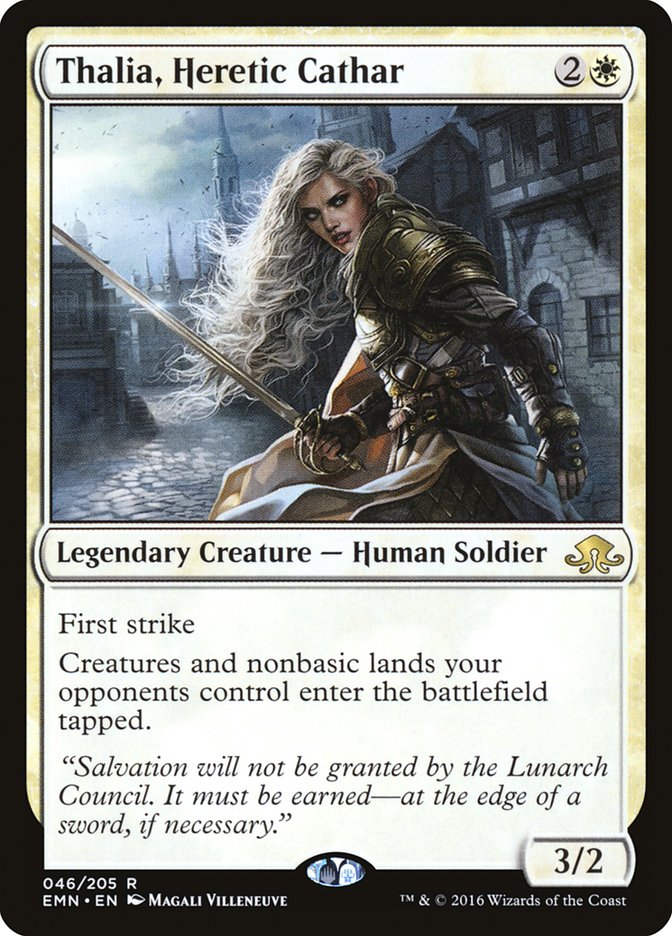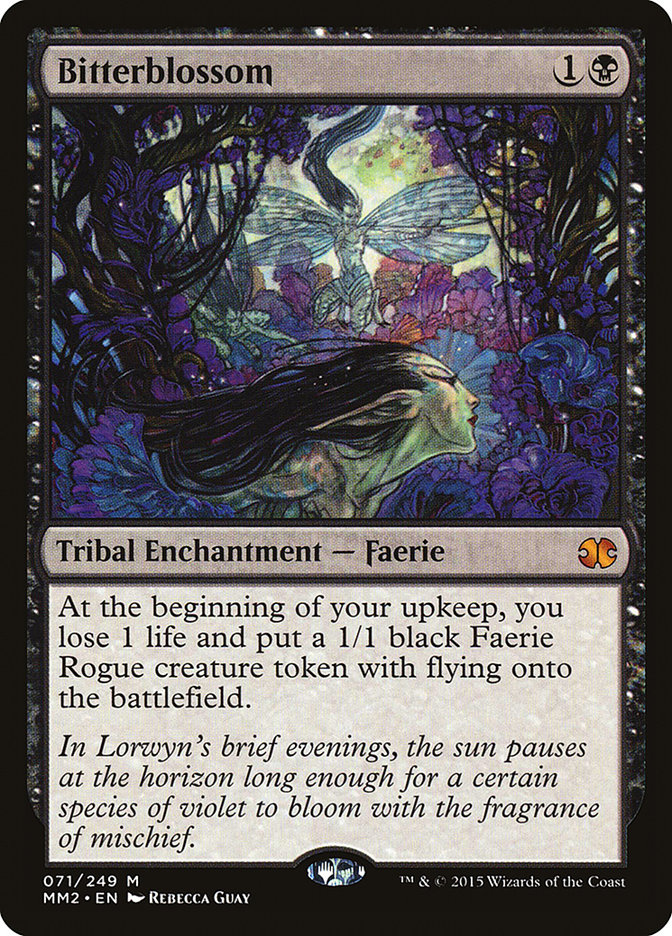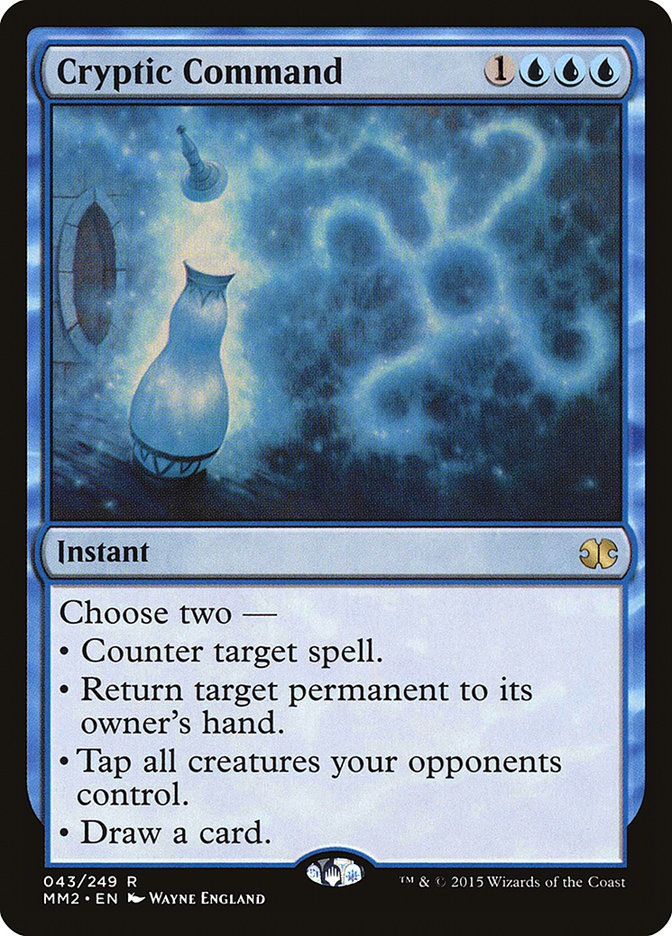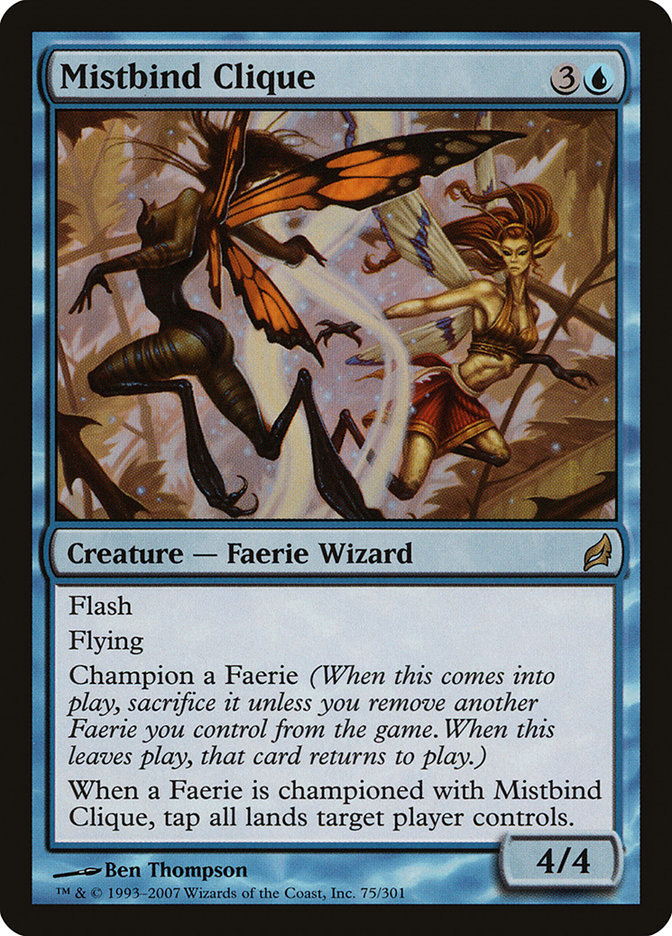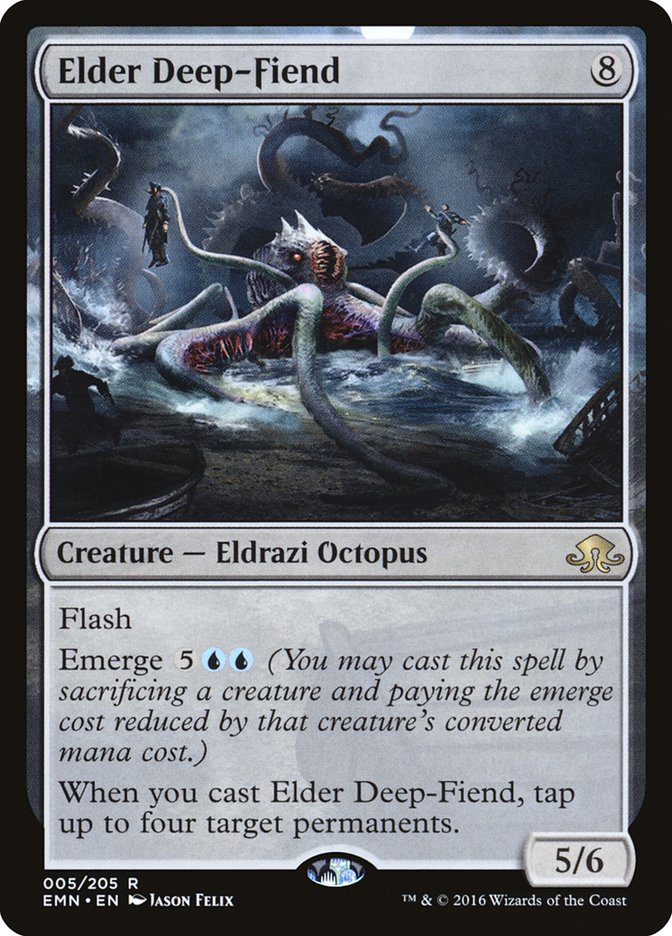Lesson One – Owen Turtenwald and Emma Handy – Framing
In terms of writing styles, it’s hard to find Magic pros as far apart as me and Owen. I tend towards heavy detail when discussing a topic, while he tends towards a quick discussion. Despite taking a different approach, I kept finding myself impressed by how he was able to frame important, broader concepts with his relatively context-focused work.
A one-liner in a deck tech using the cards from that week would be used to teach something fundamental about the game. For example, his line about adding lands to his decks in this article about W/B Control is a huge deal and could inspire a whole article of discussion about mana, but here it is presented as “I played 26 lands here because I got to play value lands and don’t want to lose to mana screw; this comes up a lot.”
Over the last two weeks, Emma Handy’s first two articles for StarCityGames.com have hit on this exact same framing tool. Specific cards, big lessons. Turns out it’s a good one and I couldn’t pass up applying it myself.
While I feel like I’ve talked a lot about the specific theory things I’ve derived from the game, that doesn’t end the list of things I can talk about. Over the years I’ve read articles from, talked to, and spent lots of time with many Magic players who are slightly to significantly better than I am. Directly and indirectly they have taught me a lot of important things that have taken time to unravel, and most of them apply to Eldritch Moon.
So here’s the spoiler season mashup.
Lesson Two – Seth Manfield – Flexibility and Payoff Define Marginal Hands
For the specific lessons, there’s no better place to start than the top. Seth is on a legendary run right now with a strong shot at being Player of the Year. Possibly just as legendary are some of the things he does and wins that buck conventional wisdom.
One of the most common things he differs from popular opinion on is mulligans. Notably he kept the following hand against Steve Rubin in the semifinals of Pro Tour Shadows over Innistrad, playing the final game for a shot at a Pro Tour Championship.
Despite these decisions producing negative gut reactions every time, after a while it becomes obvious that Seth is winning because of them and not despite them. If you are around enough to see them, a trend forms.
The above hand is an example of keeping a hand that often fails but is still above replacement value. If you hit, you are in a good position to establish a proactive presence without falling too far behind to planeswalkers or creatures. Seth didn’t draw out of it and lost, but how often is a six-card hand going to be better at keeping pace than this? Probably less often than this hand draws out of it.
The other part of this hand is that while you do have to hit a lot of running lands to get there, it still has reasonable actions to take if you hit one key point of blue mana before turn 3. You can Spell Shrivel again, Languish some creatures, and then catch up and play Dragonlord Ojutai. I’ve seen this exact style of keep by Seth time and time again, usually in ridiculous Limited decks featuring things like four Vastwood Gorgers when most people are debating if the first even makes the cut.
While Thalia, Heretic Cathar has been hyped a lot as the next game-breaker for white aggressive decks, it is a card that plays very poorly into this mulligan strategy. It has a very precise window where it is a good card, so any hand with it that stumbles is going to have a card of significantly reduced quality in it.
This issue of diminishing returns also echoes out into other situations. You want to play large numbers of Thalia, Heretic Cathar to have it on time. Typically legendary creatures you want to play large quantities of are often cards you expect to be fine trading away and recasting. Unless you want to stop haste creatures, their seventh land sometimes, or really want a 3/2 first striker, the follow-up Thalia is not exciting.
I don’t think Thalia is a bad card by any means. This is more a cautionary tale of how you can easily trick yourself into putting it into decks where it is bad. Maybe you do care about their fifth land, or their flashed-in Archangel Avacyn blocking is a problem but you can beat the indestructible trigger, or you are fine with an on-curve 3/2 first striker. But you should not be jamming Thalia into every deck on raw power level. It does not belong in your eighteen-land Human aggro deck, where your current three-drop of Always Watching is something that plays well a turn late on the play or draw.
(Notethat this doesn’t apply in Modern, where nut draw payoff is much bigger than consistency post-stumbling and Thalia just knocks out a lot of fetchland-heavy hands early on.)
Lesson Three – Paulo Vitor Damo da Rosa and Kyle Boggemes – Your Cards Don’t Have Provoke
Faeries is one of the best decks I’ve ever played, but for a year I thought it was overhyped. The cards were good, but I kept seeing people playing Bitterblossom losing under moderate pressure. The Faeries player quickly reached a point where their spells didn’t do enough to catch up and died.
Except when I played against Kyle Boggemes. He always had the right thing at the right time and I was casually defeated. At some point I got sick of losing, switched over, and found the games everyone was losing were easily winnable.
To paraphrase Paulo: You don’t have to cast your spells the first obvious chance you get.
The thing about instants and flash creatures that Paulo and Kyle understood is they have flexible timing. There are many phases in a turn and the default choice isn’t always the most valuable spot to cast your spell.
Mistbind Clique was the biggest example of this. The default play everyone made was casting it on your opponent’s upkeep to prevent them from making plays. Often the better play was letting them act and then using the 4/4 to ambush an attacker. Sometimes you waited until their end step, as getting them to tap out and untapping to protect your 4/4 was key. All that really mattered was you got to play it whenever was best right then.
Two of the most powerful cards in Eldritch Moon are flash creatures. Again we will have the Faeries-style flash gameplay.
Elder Deep-Fiend draws obvious comparisons to Mistbind Clique, and Sam Stoddard stated last week that was the homage they were aiming for with it. Why R&D thought that should be a goal is beyond me, but I certainly don’t mind. It additionally has Cryptic Command functionality of tapping your opponent’s creatures.
Just like Mistbind Clique, casting it on your opponent’s upkeep is always going to be correct. It plays just as well as Mistbind Clique at ambushing an attacker and tapping your opponent down, but it also punishes them for first-main-phase plays by just tapping whatever creature they spent their mana on instead of their lands. This likely makes it an even better end-step play in later turns, where tapping four lands might still let them play a blocker but tapping four blockers ensures a lethal swing.
Spell Queller has a slightly different but still apt comparison in Spellstutter Sprite. As with Sprite, I expect many people will hold their Spell Queller “for value” too long when they should just be playing something and applying beatdown. Wasting a turn is often worse than not getting the two-for-one a permanently stuck Queller represents. Spell Queller also has the hidden mode of just being a 2/3. Reflector Mage does more than its fair share of blocking, and Spell Queller can too.
Just because your spell has a default optimal mode doesn’t mean you can’t cast it in a million other sometimes correct ways.
Lesson Four – Sam Black and Chris Fennell – Sculpting for an Endgame
After Pro Tour Shadows over Innistrad, Sam Black wrote an article about his process of deck selection and building. The key part to that is right at the start.
“I can’t really predict what will catch my interest or why, but I always want to explore new mechanics and new ideas, and I generally look to optimize cards that will only perform with the right mix, rather than cards that are independently powerful.”
Talking to him through the development of his Clue token theme deck really emphasized the important parts of what was going on here. He was building a theme deck of sorts, but not in the typical Ironroot Chef “cool synergies” way. It was starting from the front of “what effect do I want to do,” looking at the end of “what does this deck look like if it is good and wins,” and meeting in the middle with a mix of enablers and raw power.
This is the same way Chris Fennell approaches Limited and part of the reason he is a true mastermind of 40-card decks in the way few others are. The real takeaway from Chris’s work is that this is a balanced process. In Limited more so than Constructed, it’s easy to get a cool idea for how your deck should work and overdo it, resulting in an unplayable pile. While maximizing some mediocre cards to make your deck pan out is a great thing, you can’t do it at the cost of your deck being all mediocre cards as the payoffs are rarely strong enough. Constructed has a few more exceptions where the payoffs do matter, but even then you are still bound to some limits. Modern Affinity doesn’t play Frogmite because being that all-in just produces mediocre effects and inconsistent results.
Creatures (34)
- 4 Elvish Visionary
- 2 Nissa, Vastwood Seer
- 4 Eldrazi Skyspawner
- 4 Reality Smasher
- 3 Sylvan Advocate
- 1 Thought-Knot Seer
- 4 Matter Reshaper
- 4 Duskwatch Recruiter
- 4 Loam Dryad
- 4 Elder Deep-Fiend
Lands (23)
Spells (3)
Sideboard

Creatures (22)
- 2 Pilgrim's Eye
- 4 Jace, Vryn's Prodigy
- 4 Eldrazi Skyspawner
- 1 Thought-Knot Seer
- 4 Matter Reshaper
- 3 Wretched Gryff
- 4 Elder Deep-Fiend
Lands (25)
Spells (13)

Emerge is probably the best specific example of applying this in Eldritch Moon, though Gerry Thompson has done most of the work for me here. Both his initial G/U Emerge deck and the U/R follow up focus on a key concept: how do I make a deck with Elder Deep-Fiend and Sanctum of Ugin?
Both decks do a lot of work to maximize the Eldrazi Octopus in unique ways. The Cryptolith Rite lists are excellent at finding it via Duskwatch Recruiter and also have the ability minimize the quality of investment in an Elder Deep-Fiend with all their extra mana. The U/R lists have Kozilek’s Return to build a Time Walk Wrath of God combo monster.
But the high end isn’t the only thing that impresses me about these decks. It’s how well they seamlessly merge the dream and reality. The G/U list has a real plan of just casting Reality Smasher and using Duskwatch Recruiter, which of course complements the aggressive nature of Elder Deep-Fiend tapping creatures. The U/R list needs ways to put Kozilek’s Return into its graveyard and is able to splice in the proven U/R card filtering pair of Jace, Vryn’s Prodigy and Tormenting Voice, which also brings a real removal plan as backup with Jace, Telepath Unbound ticking down.
Really, the big takeaway here is that Eldritch Moon is a high-powered set with a lot of clearly strong but uniquely powerful cards. There aren’t many cards that are just generic stats and abilities at good rate the way Archangel Avacyn was in Shadows over Innistrad. There are a lot of cards that ask you to build around them, and this is one of the best patterns to follow with that. What makes that card tick? How would a good deck utilizing that card look when it wins the game? What cogs and known powerful things exist to fill the gap between the two?



